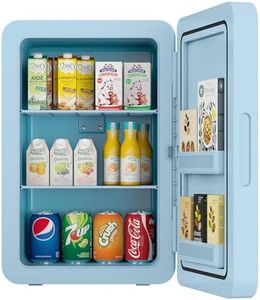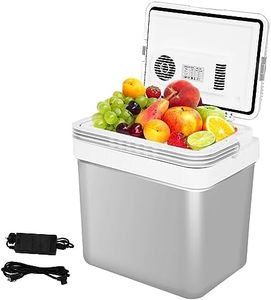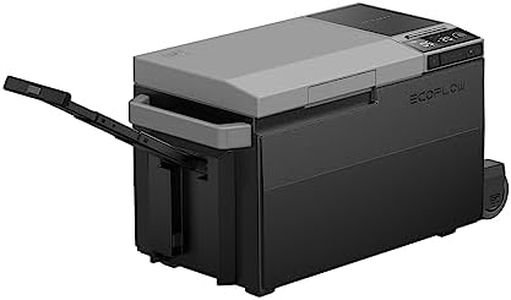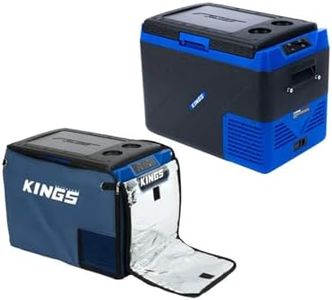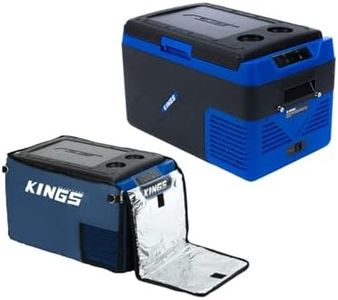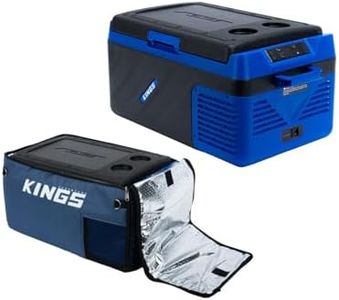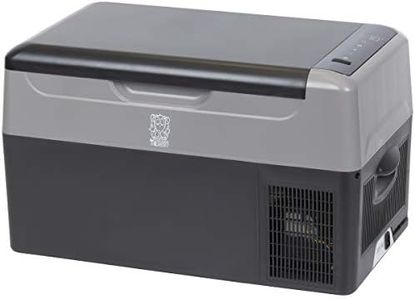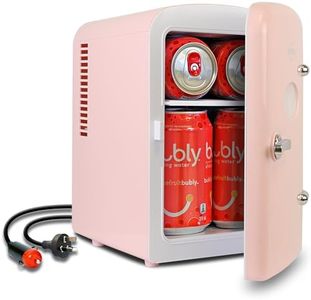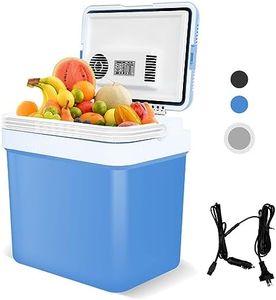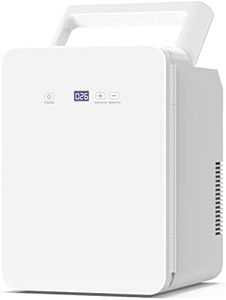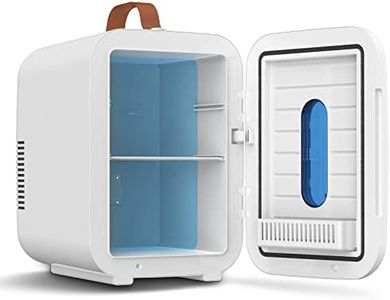We Use CookiesWe use cookies to enhance the security, performance,
functionality and for analytical and promotional activities. By continuing to browse this site you
are agreeing to our privacy policy
10 Best Portable Refrigerators
From leading brands and best sellers available on the web.Buying Guide for the Best Portable Refrigerators
Choosing a portable refrigerator is all about matching your needs for convenience, size, power use, and reliability while you're away from home. Whether you're planning road trips, camping weekends, or just want something to keep snacks cool at work, the right portable refrigerator can offer flexibility and peace of mind. Before buying, it's important to consider where, how often, and with what power sources you'll use the fridge, as these factors will help you prioritize the specs that matter most to your situation.Capacity (Volume)Capacity tells you how much the portable refrigerator can hold, usually measured in liters or quarts. This is essential for figuring out if it will fit the amount of food and drinks you need. Small units (under 20L) are best for individuals or day trips, while medium options (20-40L) suit couples or small families for a weekend. Larger units (over 40L) work for extended trips or groups. Think about how much you typically pack and how long you'll be away to decide what size matches your needs.
Power SourceA portable refrigerator can run on AC power (wall outlets), DC (car/camper outlets), or both, and sometimes solar power. This matters because it determines where you can use your fridge. If you'll mostly be in your car, a DC-compatible unit is key; for campsites with outlets, AC is handy. Some fridges offer flexible power options, making them more versatile. Choose one whose power options match where and how you plan to use it most often.
Energy ConsumptionEnergy consumption describes how much power the portable fridge uses over time, often measured in watts or estimated amp draw. Lower consumption means longer battery life if you're using it without direct access to power. Compact models usually use less, while larger or high-performance fridges consume more. If you're planning off-grid adventures where power is limited, opt for an energy-efficient model so you don't drain your batteries quickly.
Temperature RangeThis spec indicates the coldest and warmest temperatures the fridge can reach, which affects how well it can chill or even freeze items. Some basic coolers just keep things slightly below room temperature, while better units can go down to true refrigerator and freezer levels. Consider whether you only need to keep drinks cool, keep dairy or meats safe, or want to freeze items, and match your choice to those needs.
Portability (Weight and Handles/Wheels)Portability covers how easy it is to move the fridge around, factoring in how much it weighs (especially when full), and whether it includes handles or wheels. Lightweight and well-designed handles make carrying easy for quick trips. Larger or heavier models benefit from wheels for rolling. If you'll be lifting the fridge often or carrying it over uneven ground, pay attention to this, especially for larger capacity units.
Durability and Build QualityDurability refers to how well the refrigerator is built to withstand travel and outdoor conditions, including bumps and weather. Units made with sturdy materials or reinforced corners hold up better over time, especially if you'll be camping, overlanding, or using the fridge outside frequently. If your fridge will see rough use, prioritize durability; for gentle, indoor use, this may be less critical.
Noise LevelSome portable refrigerator compressors make noticeable noise when running, while others are built for quiet operation. If you sleep in close quarters with your fridge, such as in a tent or camper, quiet operation enhances comfort during the night. For outdoor daytime events, noise may be less important. Match your need for quietness with your intended usage environment.

